ĐẶC ĐIỂM SIÊU ÂM VÀ XẠ HÌNH THẬN Ở BỆNH NHÂN Ứ NƯỚC THẬN DO HẸP KHÚC NỐI BỂ THẬN NIỆU QUẢN ĐƯỢC ĐIỀU TRỊ BẰNG PHẪU THUẬT NỘI SOI HỖ TRỢ SAU PHÚC MẠC 1 TROCAR
Nội dung chính của bài viết
Tóm tắt
Mục tiêu: Góp phần mô tả đặc điểm về siêu âm và xạ hình thận ở bệnh nhân được phẫu thuật ứ nước thận do hẹp khúc nối bể thận niệu quản bẩm sinh. Đối tượng và phương pháp nghiên cứu: chúng tôi nghiên cứu hồi cứu hồ sơ của 70 bệnh nhân dưới 5 tuổi được chẩn đoán ứ nước thận bẩm sinh do hẹp khúc nối niệu quản bể thận và được phẫu thuật bằng nội soi hỗ trợ sau phúc mạc 1 trocar từ tháng 1/2011 đến tháng 6/2013 tại khoa Ngoại tiết niệu Bệnh viện Nhi trung ương. Các thông số về tuổi, giới, triệu chứng lâm sàng, đường kính trước sau của bể thận trên siêu âm và đặc điểm bài tiết nước tiểu trên xạ hình thận được ghi lại. Kết quả: có 70 hồ sơ phù hợp trong thời gian nghiên cứu; 65 trẻ nam (92,86%), 5 trẻ nữ (7,14%); tuổi từ 1 tháng đến 5 tuổi (tuổi trung bình là 22,9 ±18,6 tháng). 100% bệnh nhân được làm siêu âm trước mổ đo đường kính trước sau của bể thận, đánh giá mức độ giãn của các đài thận, độ dày nhu mô. Kích thước bể thận trung bình trước mổ là 34,3+/-8,1mm (từ 25mm đến 50mm). 56/70 (80%) bệnh nhân được làm xạ hình thận trước mổ. Chức năng thận trung bình trước mổ 47,9±9,8%. 36/56 (64,3%) bệnh nhân có đường cong bài tiết dạng tích lũy, 20/56 (35,7%) bệnh nhân có đồ thị dạng chậm bài tiết nước tiểu. Không có trường hợp nào có đồ thị bài tiết bình thường. Có sự khác biệt về chức năng thận ở nhóm bệnh nhân có đường kính bể thận trên 35mm và dưới 35 mm (p<0,05). Kết luận: siêu âm và xạ hình thận là những thăm dò có giá trị để chẩn đoán và xác định mức độ tắc nghẽn nước tiểu qua khúc nối bể thận niệu quản ở trẻ bị ứ nước thận bẩm sinh.
Chi tiết bài viết
Từ khóa
Ứ nước thận, hẹp khúc nõi bể thận niệu quản, mổ nội soi tạo hình khúc nối
Tài liệu tham khảo
2. Yang Y, Hou Y, Niu ZB, Wang CL. Long-term follow-up and management of prenatally detected, isolated hydronephrosis. J Pediatr Surg. 2010;45(8):1701-6.
3. Ji F, Chen L, Wu C, Li J, Hang Y, Yan B. Meta-Analysis of the Efficacy of Laparoscopic Pyeloplasty for Ureteropelvic Junction Obstruction via Retroperitoneal and Transperitoneal Approaches. Front Pediatr. 2021;9:707266.
4. Heinlen JE, Manatt CS, Bright BC, Kropp BP, Campbell JB, Frimberger D. Operative versus nonoperative management of ureteropelvic junction obstruction in children. Urology. 2009;73(3):521-5; discussion 5.
5. Chertin B, Pollack A, Koulikov D, Rabinowitz R, Shen O, Hain D, et al. Does renal function remain stable after puberty in children with prenatal hydronephrosis and improved renal function after pyeloplasty? J Urol. 2009;182(4 Suppl):1845-8.
6. Bansal R, Ansari MS, Srivastava A, Kapoor R. Long-term results of pyeloplasty in poorly functioning kidneys in the pediatric age group. J Pediatr Urol. 2012;8(1):25-8.
7. Abdelazim IA, Abdelrazak KM, Ramy AR, Mounib AM. Complementary roles of prenatal sonography and magnetic resonance imaging in diagnosis of fetal renal anomalies. Aust N Z J Obstet Gynaecol. 2010;50(3):237-41.
8. Ylinen E, Ala-Houhala M, Wikstrom S. Outcome of patients with antenatally detected pelviureteric junction obstruction. Pediatr Nephrol. 2004;19(8):880-7.
9. Matsumoto F, Shimada K, Kawagoe M, Matsui F, Nagahara A. Delayed decrease in differential renal function after successful pyeloplasty in children with unilateral antenatally detected hydronephrosis. Int J Urol. 2007;14(6):488-90.
10. Shokeir AA, El-Sherbiny MT, Gad HM, Dawaba M, Hafez AT, Taha MA, et al. Postnatal unilateral pelviureteral junction obstruction: impact of pyeloplasty and conservative management on renal function. Urology. 2005;65(5):980-5; discussion 5.


